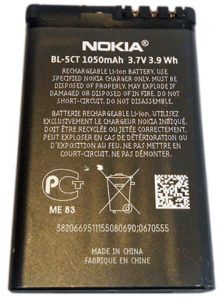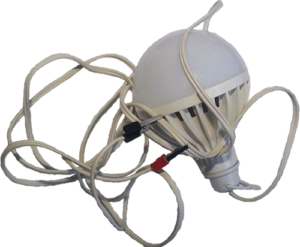The electric age is driven by batteries
Most things around us are now powered by batteries. Many devices are powered by similar types of batteries, considering voltage and capacity, but only packed in different casings. When a device stops working or there is no need for it anymore, you can salvage some parts. In this example, we will use some old Nokia batteries to create homemade power banks. Not a big deal, finished housings can be purchased for standard laptop cells in order to create a power bank. You would even get charging electronics and connectors built in. Well, we will create something different this time. Our approach will be more geeky and less conventional due to the nature of this article.
Why a power bank?
Short to say it`s because the batteries are still too inefficient to provide enough juice for today`s devices. Manufacturers sacrificed battery autonomy in order to keep devices as small as possible, retain mobility, and maintain performance. The best comparison is between today’s cell phones and the ones from ten or fifteen years ago. Today, in most cases, you must charge your phone on a daily basis, and back then, you would do it once a week. So if you want more autonomy, you need a power source, and if located somewhere without access to the power grid, a power bank jumps in.
Basically, it is a pack of batteries in which you store some energy for later use.
Should you buy or DIY?
PBs are quite useful to have due to their function and portability. It is possible to buy one in almost every consumer electronics shop or order it online. If you have some tools, basic knowledge about electronics, and want to have some fun, you can even make it yourself.
Here is the BOM for the job:
Some old batteries (I had 12 pieces of Nokia BL-5 batteries),
Soldering iron,
Soldering wire,
Cutters,
Some wire,
Insulation Tape
Schematic:

Block diagram of generic power bank
This is the block diagram of the most commonly used design for power banks. Manufacturers mainly use laptop cells, 18650 connected in parallel. The capacity of one cell times the number of cells is what they advertise as PB capacity. For example, if inside a PB are four 2500 mAh cells, it is advertised as a 10000 mAh PB.
If you have a PB of 10000 mAh capacity, and your smartphone has a 2500 battery inside, it does not mean that you can charge it from 0 to 100 % of capacity 4 times, as logic would suggest. It is closer to say that you will charge it two to three times at most.
Important to know:
Cells in the diagram are connected in parallel. These cells are typically Li-Ion batteries with a 3.7 declared Voltage. Most devices have the same 3.7 V batteries. The charger must have a higher potential than the battery. It means that for charging a 3.7 V battery, you need at least 4 V or 5V sources. This is where the 5V step-up comes in. If we charge our phone with 5V 1A, it means that we are using P=U*I 5W of power. If we take 5 W from a source of 3.7 V, it will be 5 W / 3.7 V = 1.35 A. To keep it simple, it means that from 10000 mAh PB, you get around 7000 mAh of charging. To get back to the example of the phone battery of 2500 mAh, it means that you will be able to charge it from 0 to 100 % at most 2.8 times, not considering any losses.
Here is what we did:

Our Schematic
We took twelve BL-5CT batteries and connected them by the schematic above. So it was four in parallel and then three times that in series.

BL-5CT
BL-5 is declared as 3.7 V 1050 mAh, so we connected four in parallel and got 3.7 V 4200 mAh. Connecting three times that in series got us an 11.1 V 4200 mAh battery pack. Now let`s look at the Wh or Working Hours. You get that number by multiplying voltage and capacity. 11.1 * 4.2 = 46.6 Wh. If we look at a case from our example of commercial PB, it would be: 3.7 * 10 = 37 Wh. Since the Wh is the amount of energy that can be stored in the battery, it is clear that numbers are in favor of our PB, and considering we got it from junk and it cost almost nothing, it is a great result, right?

Finished PB

The voltage of fully charged PB
What to do with it now?
You can power up many things with this power bank, portable radio, car phone charger, camping light, and many other gadgets, and therefore enjoy using them off the grid.

A car phone charger connected to a PB is charging two smartphones.

12 V 15 W led camping light

LED-Powered by PB, consumes 0.67A
Anyone interested can purchase a similar LED on eBay for under 5 $. Here is the link for the starting point, so feel free to explore if you are interested. Just replace the wires and alligator clips when you get it since the original ones are too short and too thin.
Charging:
These batteries have a built-in charging control, and when full, they will stop taking current. What I usually do is feed them with a 12V power source in series with a 12V 5W light bulb from a car interior light. The light bulb is there for overcurrent protection, and you can buy it almost anywhere. You can use any DC charger or adapter, for example, from an old external hard drive, in general, anything that outputs 12 – 18 Volts and 1 A or more.

Charging batteries
Word of an author:
I just had some of these old Nokia batteries and therefore did something better than throw them away. Since I was indeed in need of a power bank, this was a logical choice. It is interesting that these batteries were old and much used, but still found in great shape. I measured that they still have more than 80 % of their stated capacity, and that is awesome. I will later install a cigarette lighter socket, like in every car, so I can plug in things directly and avoid wires and alligator clips.
Well, it is time to end this story. I hope you find it useful and interesting, and if you have any comments, thoughts, or simply want me to test something, please leave a comment, and we will get in touch.
Once again, thank you for reading.

🙂

